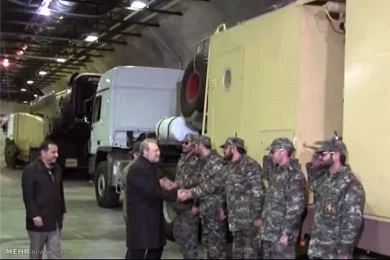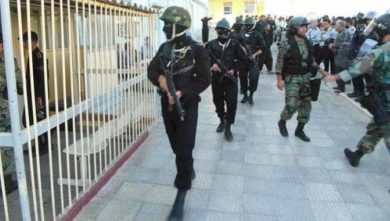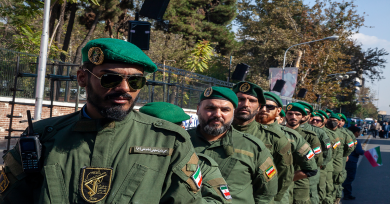In the heart of Iran’s most turbulent political era since the 1979 revolution, a new force has emerged: Generation Z—tech-savvy, globally aware, and fearless. At the forefront of this generational surge are young Iranian women who are radically transforming the country’s protest landscape.
From viral TikTok videos of women dancing in defiance of the morality police to powerful Instagram testimonials exposing state violence, Iran’s young women are rewriting the rules of dissent. Their rebellion is not only against mandatory hijab laws, but against the deeply rooted patriarchal control enforced by institutions like the Islamic Revolutionary Guard Corps (IRGC).
This article explores how Gen Z—especially its young female leaders—is driving change, defying oppression, and reshaping Iran’s path toward freedom, justice, and equality.
1. Who Is Generation Z in Iran?
Born between 1997 and 2012, Generation Z in Iran has never known a world without economic sanctions, internet censorship, and the mandatory hijab law. Unlike previous generations, they grew up with smartphones, access to global media, and virtual windows into cultures and lifestyles starkly different from their own.
Key Traits of Iranian Gen Z:
• Digitally native: Social media is second nature.
• Globally informed: Fluent in digital language, many are multilingual and follow international movements.
• Individualistic and expressive: More inclined to express identity, question authority, and demand personal freedom.
• Politically conscious: Informed about issues like gender inequality, state violence, and climate change.
2. The Catalyst: Mahsa Amini and the 2022 Uprising
The spark for Gen Z’s mass mobilization came in September 2022, when Mahsa (Jina) Amini, a 22-year-old Kurdish woman, died in police custody after being arrested by the morality police for “improper hijab.” Her death triggered nationwide protests led predominantly by young women and students.
For Gen Z, this was not just another tragedy—it was personal.
What Made This Moment Different:
• Mahsa was one of them: A young woman navigating the same repressive system.
• Digital outrage: Protests, memorials, and police crackdowns were shared in real time on platforms like Twitter, TikTok, and Telegram.
• A unifying slogan: “Women, Life, Freedom” captured both feminist and national aspirations.
3. How Young Women Are Leading
A. Public Acts of Defiance
Iranian Gen Z women are taking their resistance to the streets, and their actions speak volumes:
• Removing hijabs in public.
• Cutting their hair as a sign of mourning and protest.
• Forming flash mobs in malls, universities, and public transport stations.
These symbolic acts may seem simple but are extremely risky in Iran’s police state—especially with the IRGC and morality police watching closely.
B. Schoolgirl Protests
One of the most striking images from the 2022–2023 protests were schoolgirls removing their headscarves, flipping off portraits of Ayatollah Khamenei, and chanting anti-regime slogans in classrooms and courtyards.
These acts represent a fundamental generational shift: Girls as young as 12 or 13 are now active participants in the revolution, fearless in the face of armed authority.
4. Digital Resistance: The New Battlefield
A. TikTok, Instagram, Telegram
Social media has become the primary battleground for Iran’s youth:
• TikTok is used to share dance videos and political memes.
• Instagram showcases protest footage and personal testimonies.
• Telegram channels share real-time updates on arrests, protests, and legal resources.
B. Circumventing Censorship
Despite internet shutdowns and heavy surveillance by the IRGC, Gen Z is adapting quickly:
• Using VPNs, proxy servers, and encrypted apps like Signal.
• Circulating offline downloads of protest content.
• Educating one another in cybersecurity and digital hygiene.
Their ability to communicate, organize, and mobilize despite state censorship is unprecedented.
5. From Culture to Protest: Art, Fashion, and Identity
A. Fashion as Resistance
Young women are using clothing and appearance as tools of rebellion:
• Loose hijabs, bright makeup, and Western-style fashion.
• Choosing not to wear the hijab at all in public places.
B. Music and Art
• Protest songs by young musicians circulate widely online.
• Graffiti, murals, and digital art are used to honor martyrs and spread political messages.
This blending of culture with protest is redefining what activism looks like in Iran.
6. IRGC’s Response: Brutality and Crackdown
A. Targeting Schools and Universities
The IRGC and Basij paramilitary have launched harsh crackdowns on student movements:
• Raids on university dorms.
• Arrests of students and schoolgirls.
• Expulsion and banning of students from continuing education.
B. Surveillance and Intimidation
• Young women have been abducted, interrogated, and in some cases tortured.
• Families are threatened to keep daughters from participating in protests.
• Some were forced to give televised confessions.
Yet, despite these brutal measures, Gen Z women continue to resist.
7. Voices of the Movement
A. Nika Shakarami (2005–2022)
A 16-year-old protester who disappeared during a protest and was later found dead. Authorities claimed suicide, but her family insists she was killed by security forces. Nika has become a symbol of Gen Z’s bravery.
B. Armita Geravand (2006–2023)
Another teenage girl reportedly injured and later died after an altercation with morality police in the Tehran metro. Her death became another rallying cry.
C. Anonymous Young Leaders
Many protest leaders are unnamed for their safety, but online movements are largely driven by teenage girls, university students, and even high schoolers who are now shaping the narrative of a new Iran.
8. Global Solidarity: The Role of the Diaspora and International Community
The Iranian diaspora, especially Gen Z abroad, plays a huge role in:
• Amplifying stories on international platforms.
• Organizing protests in cities like Paris, Toronto, Berlin, and New York.
• Supporting VPN access and fundraising for activist causes.
What the World Can Do:
• Pressure governments to hold Iran accountable for violence against youth.
• Support global sanctions on IRGC figures involved in human rights violations.
• Amplify the voices of Iran’s Gen Z across international media.
9. The Road Ahead: Can Gen Z Lead a Real Revolution?
Iran’s Gen Z is shifting the paradigm. Unlike earlier movements that relied heavily on older political ideologies, Gen Z’s rebellion is fluid, feminist, and decentralized. It doesn’t wait for permission, nor does it seek validation from traditional opposition figures.
Challenges:
• Sustaining momentum under brutal crackdowns.
• Lack of centralized leadership.
• Economic hardship and rising emigration.
Strengths:
• Global connectivity.
• Collective creativity and innovation.
• An unshakable belief that they deserve better.
Conclusion: Iran’s Future Has a New Face
Iran’s Generation Z—especially its young women—has become the soul of a new revolution. They are not waiting for permission or following in the footsteps of past movements. Instead, they are forging a bold, fearless, and uncompromising path toward freedom, justice, and dignity.
The IRGC can try to silence them, but their voices echo across classrooms, streets, and screens. They are not just demanding a better Iran—they are building it, one protest, one post, and one act of defiance at a time.
Join Our Newsletter!
Stay informed with the latest updates, news, and ways to take action in the fight for justice and global security. Sign up now to get updates delivered straight to your inbox!





